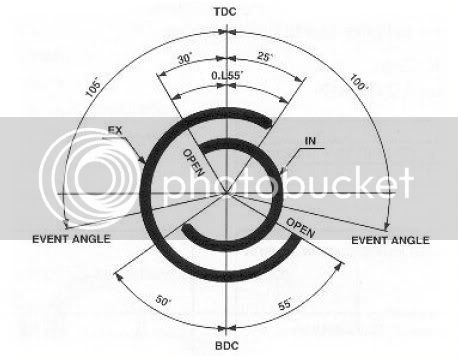phoneman91
Active member
- Joined
- May 2, 2007
- Messages
- 28
- Reaction score
- 0
Would anyone know the camshaft duration of lift/camshaft profile for the FJR??
Last edited by a moderator:

Depends on how fast your pushing the bike.Would anyone know the camshaft duration of lift/camshaft profile for the FJR??
Why not?? I am just interested in how Yamaha tuned the bike to get this extremely wide torque band---aside from the 1300CCs and relatively low weight.Why?



[karnac impersonation]......I see you purchasing a service manual in your future.....[/karnac]Why not?? I am just interested in how Yamaha tuned the bike to get this extremely wide torque band---aside from the 1300CCs and relatively low weight.Why?
The FMS doesnt list duration and lobe separation--just lift. I would agree that short duration and high lift would be the likely configuration.:glare:[karnac impersonation]......I see you purchasing a service manual in your future.....[/karnac]Why not?? I am just interested in how Yamaha tuned the bike to get this extremely wide torque band---aside from the 1300CCs and relatively low weight.Why?

Wait when the Concours 14 comes out--it too will be low emission/Euro 3 spec with cats and it will have very high horsepower--probably 170 or more horsepower. But one thing it wont have is-- sexy good looks!!I feel another point that has been left out is exhaust emmisions. While more aggressive cam profiles and other changes will allow the engine to create more power, the bike must still meet Federally mandated emmission levels before it can be sold.
Hence the catalytic converters and lean mixture settings from the factory. 145 HP is really not that great when compared to what engines are making with even less displacement in other bikes. You can rest assured that there is significantly more power available and Yamaha will extract it if necessary to maintain its sales base should another manufacturer (Kawasaki ?) bring in a competitive model that trumps the FJR in power and torque output.
Good luck and ride safely.
dI doubt that the horsepower of the Kawasaki will be anywhere near that high. On the Kaw website the max torque is listed as 100.3 lb-ft @ 6200 rpm. Compression ratio is 10.7 : 1.
https://www.kawasaki.com/Products/Detail.as...=specifications
The FJR's max torque is 99 lb-ft @ 7000 rpm.
I think the redline on the Kaw is 10500 rpm, a bit higher than the FJR's 9000 rpm.
Since the max torques on the engines are about the same the max hp's will be a function of how rapidly the torques roll off from their peaks as the rpm increases.
I expect the Kaw's hp to be just a bit higher than the FJR's but not much higher. They can then claim they have the most powerful supersport tourer.
Enter your email address to join: